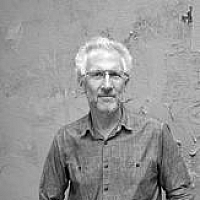
Brancolini Grimaldi Via dei Tre Orologi, 6/A 00197 Roma Italie
A pioneer of color photography, Mr. Epstein has been making pictures, films, and photographic books for 35 years. His Vietnam pictures from the 1990s offer the artist's characteristic balance of formal rigor and nuanced wit; and they are a vivid example of what critic Joanna Lehan calls Epstein's "jaw-dropping use of color." These photographs are also an important marker in Epstein's evolution as an artist, a bridge between his early street work and his large format work to come.
The pictures in this exhibition are a poetic odyssey through post war Vietnam. These photographs suggest that under beauty lies violence; and under the remnants of war is a society grappling with new freedoms and continued censorship.
Between 1992 and 1995, as Vietnam started to open its borders to outsiders after two decades of isolation, Mitch Epstein made six trips there. He collaborated on a book with a dissident Vietnamese novelist, thereby gaining an understanding of and access to the country that few outsiders had. In 1995, however, Epstein learned he would have to submit his pictures to the Vietnamese government for censorship. In the name of artistic freedom, Epstein broke the collaboration and his book, Vietnam: A Book of Changes, was published with a text by the artist. These photographs are still virtually unseen in the country from which they emerged, except by the intelligentsia that smuggled in the book.
This exhibition illuminates a pivotal point in Epstein's career. In Vietnam, the artist's method became more deliberate and painterly. He mastered and reinvigorated the still life. His slower, increasingly formalist approach naturally led to the 8x10 view camera he now uses. Vietnam also signaled a new period where politics would indirectly, yet significantly affect Epstein's work. His next projects all evoke--as the Vietnam photographs do--a keen sense of society's machinations. In Vietnam, The City, Family Business, and the ongoing American Power, Epstein subtly conveys that the power of a patriarch, a city, or a nation leaves its mark on private lives and the public landscape.

